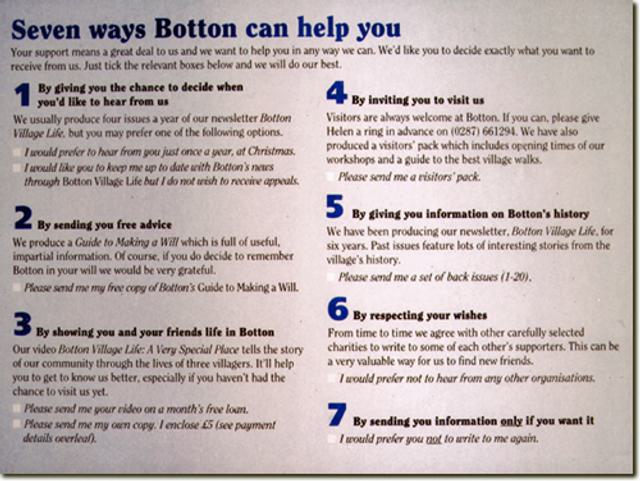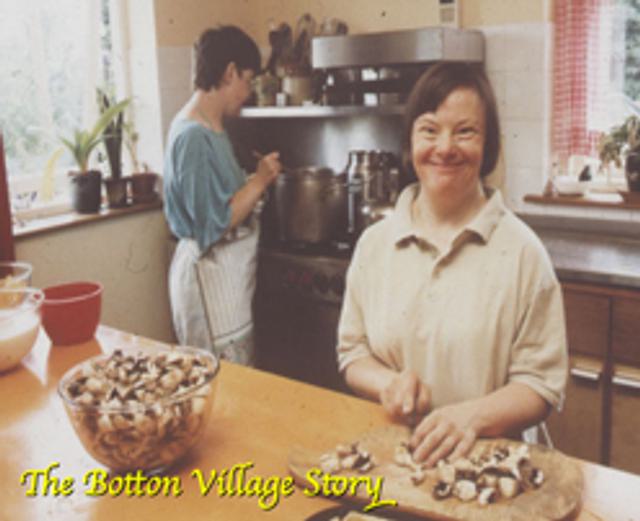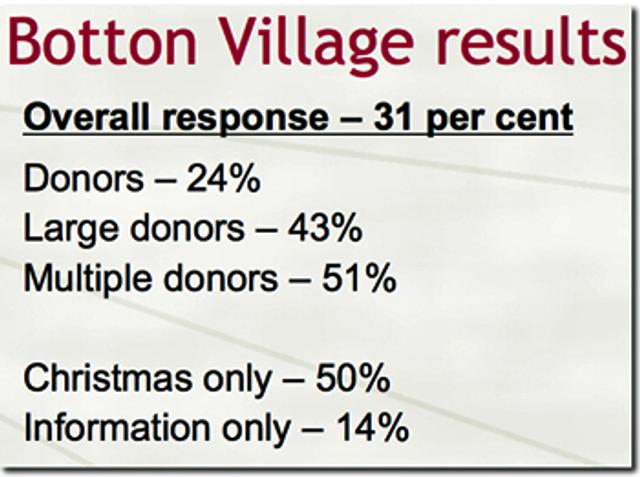Botton Village: giving donors choices
- Exhibited by
- Maxine Delahunty
- Added
- August 24, 2009
- Medium of Communication
- Direct mail
- Target Audience
- Individuals, regular gift
- Type of Charity
- Disabilities, public/society benefit
- Country of Origin
- UK
- Date of first appearance
- Unknown
SOFII’s view
Until the late 1980s/ early 1990s when Botton Village started offering its donors choices with the simple form shown opposite, donors everywhere were almost invariably not given any say in how they might be communicated with. This simple experiment, which became progressively more sophisticated, is one of the most important steps in donor relationship development in the history of fundraising.
Creator / originator
Burnett Associates Limited working with Botton Village
Summary / objectives
Botton Village is a working rural community where adults with a mental handicap can lead happy, productive lives living alongside ‘co-workers’ who don't have a mental handicap. The Village strives to be self sufficient but is generously supported by friends, its donors, who help make Botton the happy, thriving place its now is.
The radical objective for this initiative was to give donors a range of practical choices, so that they could determine for themselves what they want to receive from Botton Village’s fundraisers, rather than what was up until then the universal norm, that fundraisers decided what donors should receive and just sent them what they wanted them to have.
Background
Segmentation is crucial for fundraisers. Donors are not an amorphous mass. If we know some things about our donors we can relate to them more efficiently and more effectively. Yet if they segment at all, fundraisers historically tend to segment just in two ways: by demographics and by past behaviour. The first of these – by demographic factors – involves knowing who your donor is, what he or she does for a living, age, sex, social class and so on. The second – past behaviour – includes such obvious factors as giving history, levels, appeal subjects, etc. Choice is the third level of segmentation. If we could allow donors to choose, on a range of aspects of how we relate to them, might we not as a result become much better informed about how we might communicate appropriately with donors?
When it first appeared in the early 1990s this was a radical departure from accepted fundraising practice. It was driven by an idealistic view of how fundraising should work at best – the conviction that donors will be more likely to respond positively to requests for support if they get what they, the donor, wants to receive, rather than being sent simply what the fundraiser wants them to have.
Many professional fundraisers at the time thought this was madness. How could you allow donors to opt not to receive your regular mailings? But the fundraisers at Botton and Burnett Associates were not taking any reckless risk, for by thorough data analysis over several years they were already aware that most of Botton’s donors only gave once or perhaps twice each year. Despite whatever the charity was sending them, donors were themselves indicating through their gifts how often and when they wanted to help. Really all Botton did was to allow donors to formalise this and so were able to save on postage and printing costs and to reduce the irritation of unwanted mail that would never be responded to. And donors loved being asked and respected Botton Village hugely for their courtesy, which was highly unusual among direct marketing fundraisers at the time. And still is, of course.
Special characteristics
This was a unique offer to donors. As far as we are aware, nothing like it had ever been seen before.
Influence / impact
Though few fundraisers have been able or at least willing to go to the trouble that’s involved in offering donors choices and delivering on the implications of donors’ decisions, nevertheless Botton Village’s courageous step and the results it achieved have had a huge influence on fundraisers around the world. Donors are increasingly offered practical choices as a result.
Details
The precise responses to all segments have been recorded and analysed rigorously by Botton Village and have informed all their donor development and communication decisions. Botton Village really listens to its donors.
Results
See illustration.
Merits
This was a seismic moment in the development of ‘relationship fundraising’ practices.
See also this 20 minute video
The Botton Village story: the cradle of relationship fundraising.
http://sofii.org/article/sofiis-letter-to-the-future.
And project 13 for the Commission on the Donor Experience, Giving choices and managing preferences.
SOFII's I Wish I'd Thought Of That 2012 - Craig Linton presents Botton Village
 View original image
View original image





















